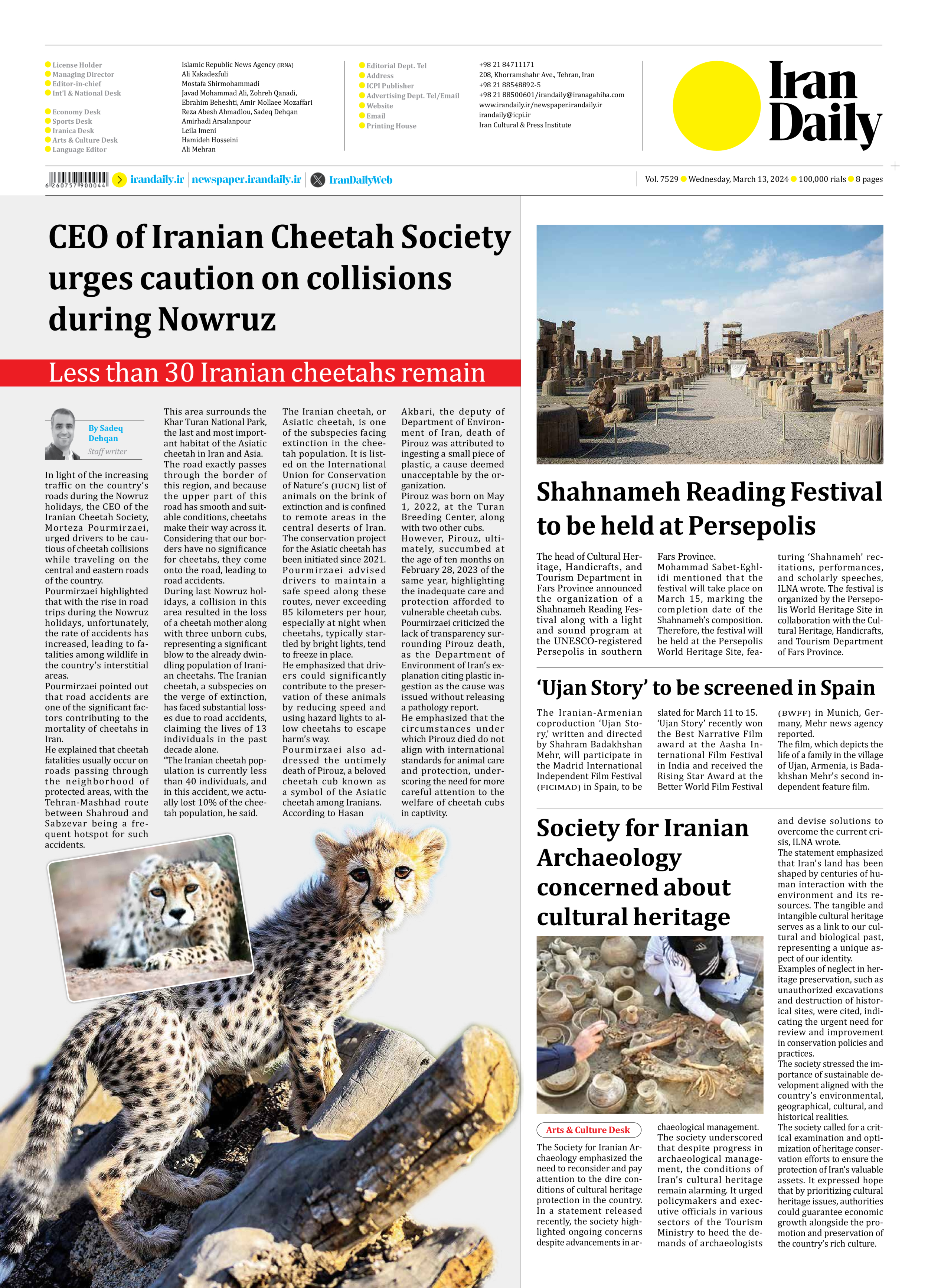
CEO of Iranian Cheetah Society urges caution on collisions during Nowruz
Less than 30 Iranian cheetahs remain
By Sadeq Dehqan
Staff writer
In light of the increasing traffic on the country’s roads during the Nowruz holidays, the CEO of the Iranian Cheetah Society, Morteza Pourmirzaei, urged drivers to be cautious of cheetah collisions while traveling on the central and eastern roads of the country.
Pourmirzaei highlighted that with the rise in road trips during the Nowruz holidays, unfortunately, the rate of accidents has increased, leading to fatalities among wildlife in the country’s interstitial areas.
Pourmirzaei pointed out that road accidents are one of the significant factors contributing to the mortality of cheetahs in Iran.
He explained that cheetah fatalities usually occur on roads passing through the neighborhood of protected areas, with the Tehran-Mashhad route between Shahroud and Sabzevar being a frequent hotspot for such accidents.
This area surrounds the Khar Turan National Park, the last and most important habitat of the Asiatic cheetah in Iran and Asia.
The road exactly passes through the border of this region, and because the upper part of this road has smooth and suitable conditions, cheetahs make their way across it. Considering that our borders have no significance for cheetahs, they come onto the road, leading to road accidents.
During last Nowruz holidays, a collision in this area resulted in the loss of a cheetah mother along with three unborn cubs, representing a significant blow to the already dwindling population of Iranian cheetahs. The Iranian cheetah, a subspecies on the verge of extinction, has faced substantial losses due to road accidents, claiming the lives of 13 individuals in the past decade alone.
“The Iranian cheetah population is currently less than 40 individuals, and in this accident, we actually lost 10% of the cheetah population, he said.
The Iranian cheetah, or Asiatic cheetah, is one of the subspecies facing extinction in the cheetah population. It is listed on the International Union for Conservation of Nature’s (IUCN) list of animals on the brink of extinction and is confined to remote areas in the central deserts of Iran. The conservation project for the Asiatic cheetah has been initiated since 2021.
Pourmirzaei advised drivers to maintain a safe speed along these routes, never exceeding 85 kilometers per hour, especially at night when cheetahs, typically startled by bright lights, tend to freeze in place.
He emphasized that drivers could significantly contribute to the preservation of these animals by reducing speed and using hazard lights to allow cheetahs to escape harm’s way.
Pourmirzaei also addressed the untimely death of Pirouz, a beloved cheetah cub known as a symbol of the Asiatic cheetah among Iranians.
According to Hasan Akbari, the deputy of Department of Environment of Iran, death of Pirouz was attributed to ingesting a small piece of plastic, a cause deemed unacceptable by the organization.
Pirouz was born on May 1, 2022, at the Turan Breeding Center, along with two other cubs.
However, Pirouz, ultimately, succumbed at the age of ten months on February 28, 2023 of the same year, highlighting the inadequate care and protection afforded to vulnerable cheetah cubs.
Pourmirzaei criticized the lack of transparency surrounding Pirouz death, as the Department of Environment of Iran’s explanation citing plastic ingestion as the cause was issued without releasing a pathology report.
He emphasized that the circumstances under which Pirouz died do not align with international standards for animal care and protection, underscoring the need for more careful attention to the welfare of cheetah cubs in captivity.







